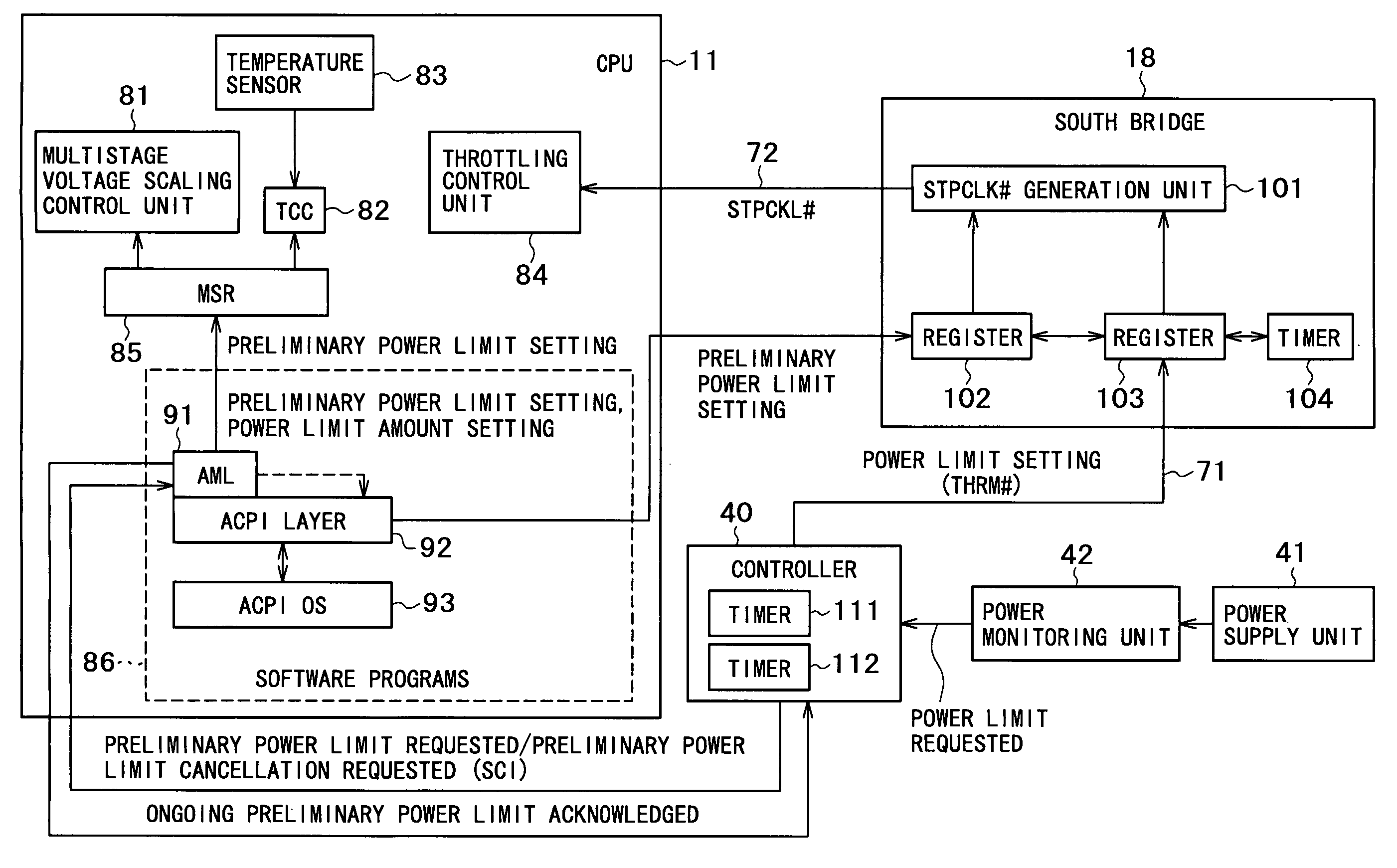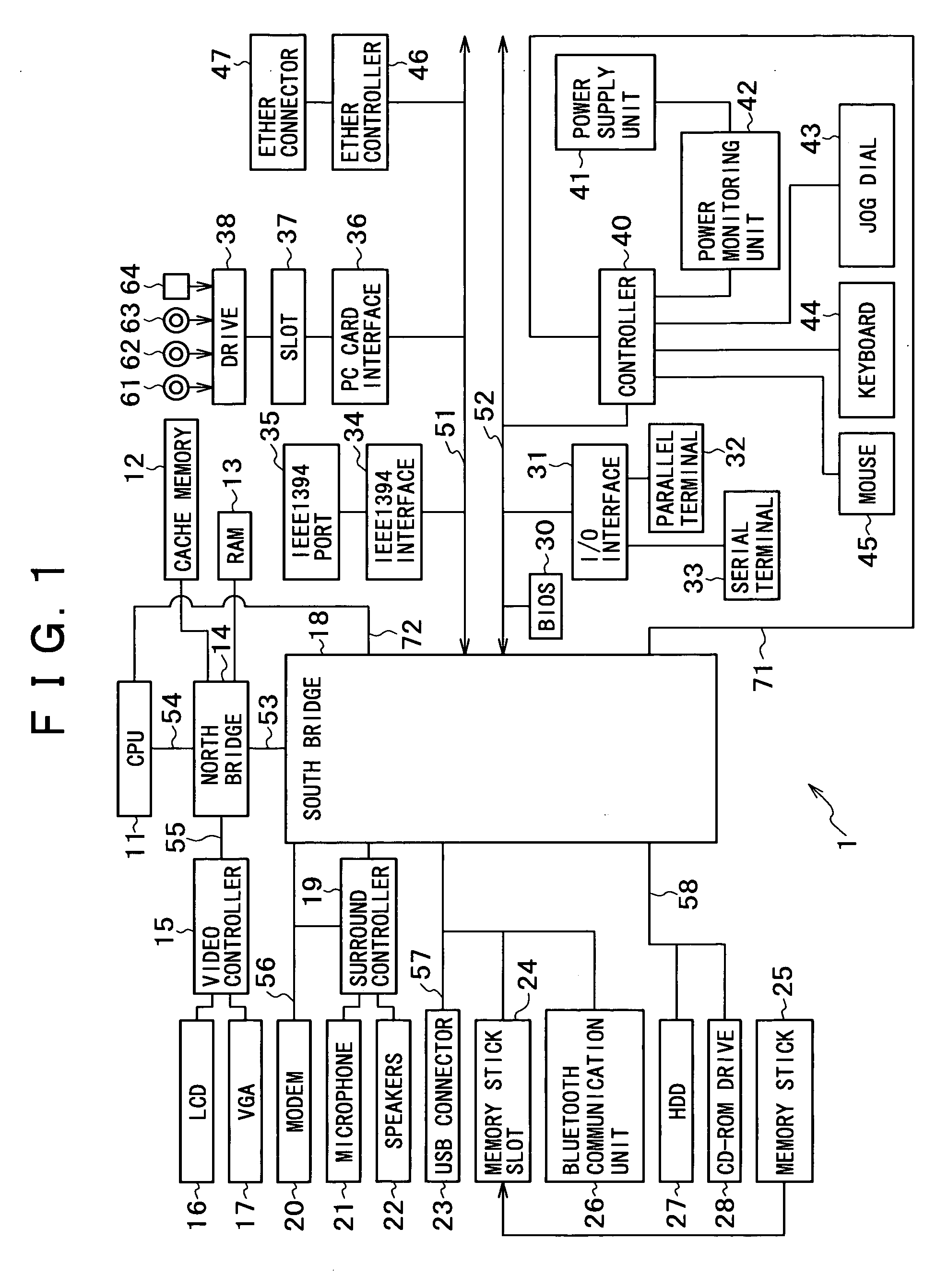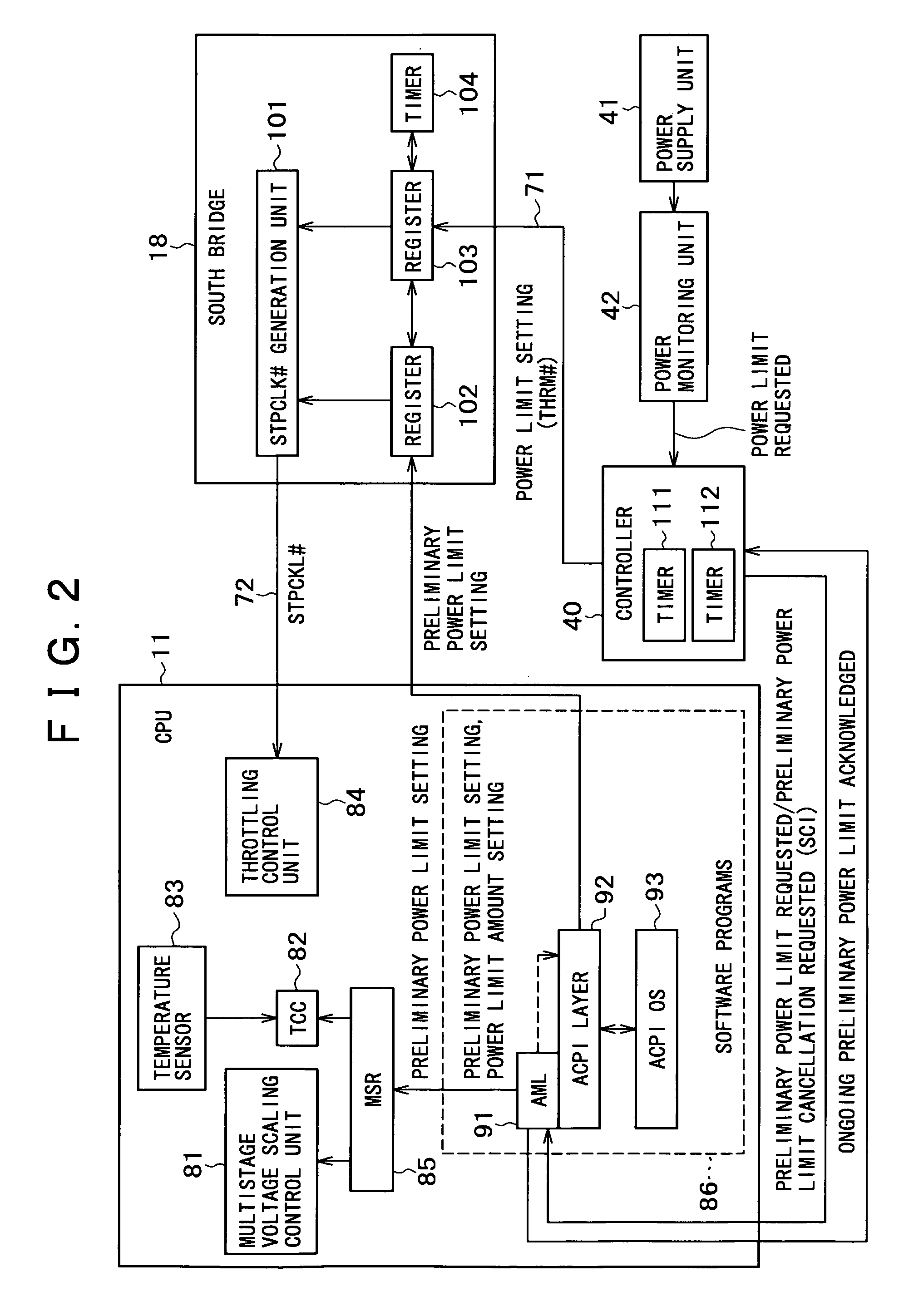Information processing apparatus, information processing method, and program
a technology of information processing and information processing method, applied in the direction of data processing power supply, liquid/fluent solid measurement, instruments, etc., can solve the problems of large power supply unit size, difficult design of power supply apparatus, and high implementation cost of power supply unit, so as to achieve simple transport of techniques and avoid running the risk of quality defects
- Summary
- Abstract
- Description
- Claims
- Application Information
AI Technical Summary
Benefits of technology
Problems solved by technology
Method used
Image
Examples
Embodiment Construction
FIG. 1 shows a typical structure of an information processing apparatus 1 embodying this invention.
In the information processing apparatus 1 of FIG. 1, a CPU 11 is constituted illustratively by a Pentium (registered trademark) processor from Intel Corporation and is connected to a front side bus (FSB) 54. The FSB 54 is connected to a north bridge 14 which has an accelerated graphics port (AGP) 55 and is linked to a bus 53 (or to a hub interface 53 in an Intel arrangement).
The north bridge 14 is illustratively composed of an AGP host bridge controller 440BX from Intel Corporation, providing control over a RAM (random access memory, working as a main memory in this setup) 13. The north bride 14 also controls a video controller 15 through the AGP 55. The video controller 15 provides control over a display unit such as an LCD (liquid crystal display) 16 or a VGA (video graphics array) display 17 (called the VGA 17 hereunder).
Upon receipt of data (image or text data) from the CPU 11...
PUM
 Login to View More
Login to View More Abstract
Description
Claims
Application Information
 Login to View More
Login to View More - R&D
- Intellectual Property
- Life Sciences
- Materials
- Tech Scout
- Unparalleled Data Quality
- Higher Quality Content
- 60% Fewer Hallucinations
Browse by: Latest US Patents, China's latest patents, Technical Efficacy Thesaurus, Application Domain, Technology Topic, Popular Technical Reports.
© 2025 PatSnap. All rights reserved.Legal|Privacy policy|Modern Slavery Act Transparency Statement|Sitemap|About US| Contact US: help@patsnap.com



